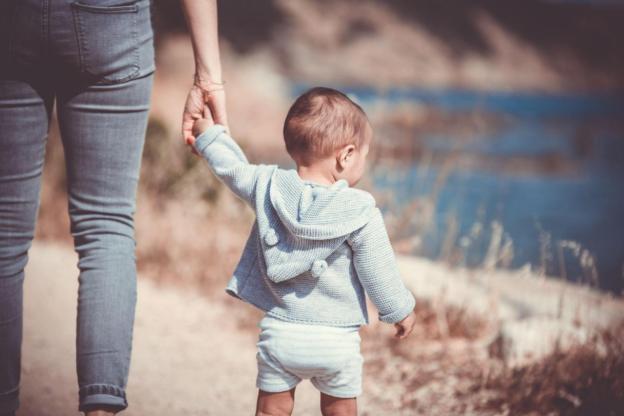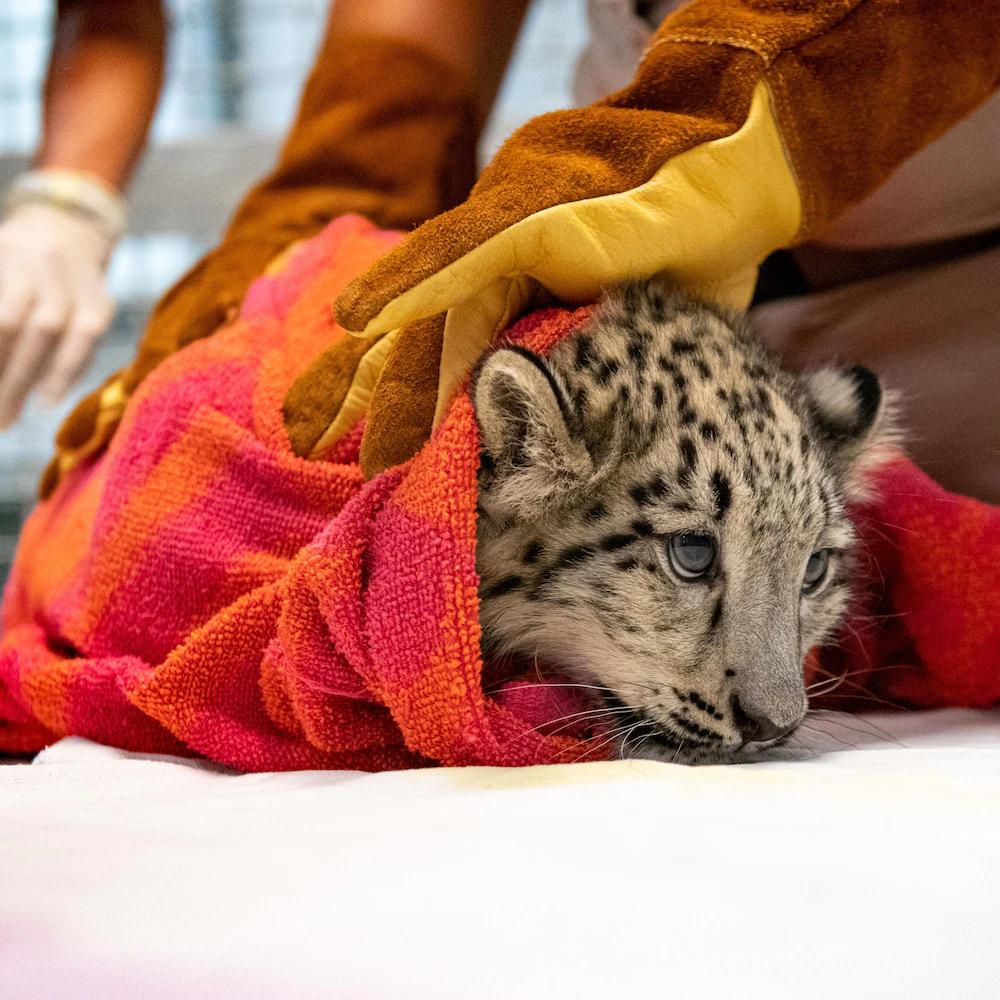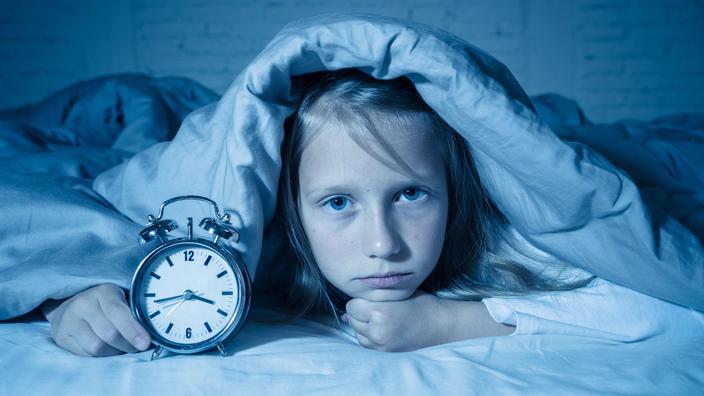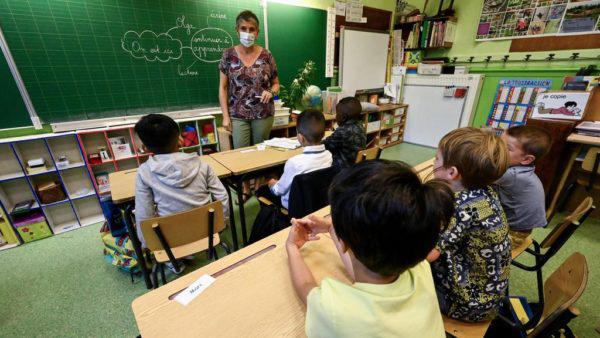
Geneviève Cabana knows these residents very well, and vice versa. The animal care technician gently calls the mother, Elsa, as one would a house cat. She whispers words of encouragement to him, while handing him small pieces of meat through the fence of the enclosure.
Elsa pricks up her ears and approaches, curious. Geneviève then proceeds to a series of exercises with the big cat, which responds to the finger and the eye: show the inside of its paws, touch a stick with the tip of its muzzle. Activities that allow the technician to examine the leopard, without having to go through the operating table.
Technician Geneviève Cabana shows how she examined the leopard's mammary glands. Photo: Radio-Canada / Marie-Claude Lyonnais Elsa is trained.
She allows us to have some contact with her.
Besides, we could touch her mammary glands and in two, three weeks, we saw them grow
. This is one of the signs that prompted Geneviève to suggest an ultrasound of Elsa's belly, suspecting that a pregnancy was in progress.
Because the baby was waiting! The Zoo even believed that the couple's love affair was disrupted by the presence of Elsa's mother, Snowflake, who has since left the establishment. In the end, the grandmother had nothing to do with it! Snow leopards can breed from the age of three.
Them, there was a small delay, perhaps because of a later maturity in their case
, underlines Geneviève Cabana.
The baby's arrival was all the more expected since its genetic background is poorly represented in snow leopards in captivity, an important criterion for ensuring that the population is diverse, strong and healthy.
Currently, we have 138 individuals who are part of the conservation program for the species and what is targeted is 150, explains Chantal Routhier, curator at the Zoo de Granby.
To be able to achieve this, it would take 12 births per year and, for the moment, we have 5 or 6.

Remembered that when I was 16 I wanted to learn how to suture wounds and treat broken bones and all that shit becau… https://t.co/BUKVy36FNW
— テイ 🔞 @ icon comms: CLOSED Thu Aug 09 06:41:15 +0000 2018
This program is the Association of Zoos and Aquariums' Species Survival Plan, which aims to conserve and manage populations of vulnerable animals in captivity in accredited zoos. Because the state of the snow leopard – even if it is not on the verge of extinction like its cage neighbor, the Amur leopard – is still fragile. Difficult to know the precise number of individuals in the wild: is it 2500 or 6000? Studies are underway to try to determine the number of big cats living on an immense territory the size of Mexico, which is spread over 12 Asian countries. The Zoo de Granby, by financing the purchase of telemetry and geolocation devices, is also participating in this international effort to obtain conclusive data on the animal.
Currently, 138 snow leopards are part of the species conservation program. Photo: Radio-Canada / André Vuillemin These data, many experts eagerly await. In 2017, the International Union for Conservation of Nature (IUCN) reclassified the status of the snow leopard from endangered
to vulnerable
, because its decline is slower than expected
. Jennifer Snell Rullman, who works for the Snow Leopard Trust, an organization that works to conserve the animal in the wild, says the news is far from being greeted with trumpets and shouts of joy.
It was a wrong decision!
There was not enough data to make this decision!
she exclaims*. A fact supported by several experts. The leopard has thus lost protective mechanisms, and yet everyone agrees, including the International Union for Conservation of Nature IUCN , to say that it faces very serious threats
, deplores Jennifer Snell Rullman.
Scientists confirm that the decline of the snow leopard is real: loss of its territory, poaching – from 220 to 450 animals per year –, climate change and reduction in the number of its prey, which is also in freefall. The threats are many. In some areas, it is also hunted by residents, as it attacks livestock.
Jennifer Snell Rullman is also torn when asked what the future holds for the species. From her office in Seattle, in the United States, she lets out a small sigh of discouragement. Commercial mines were not a threat in 2003. Today it is the biggest threat to the snow leopard.
With climate change and emerging threats … we don't know what the situation will be in the future
, she worries.
The Granby Zoo veterinarian, Émilie L. Couture, reminds us that this first birth for Elsa and Kang allows us to see the future with more optimism.







